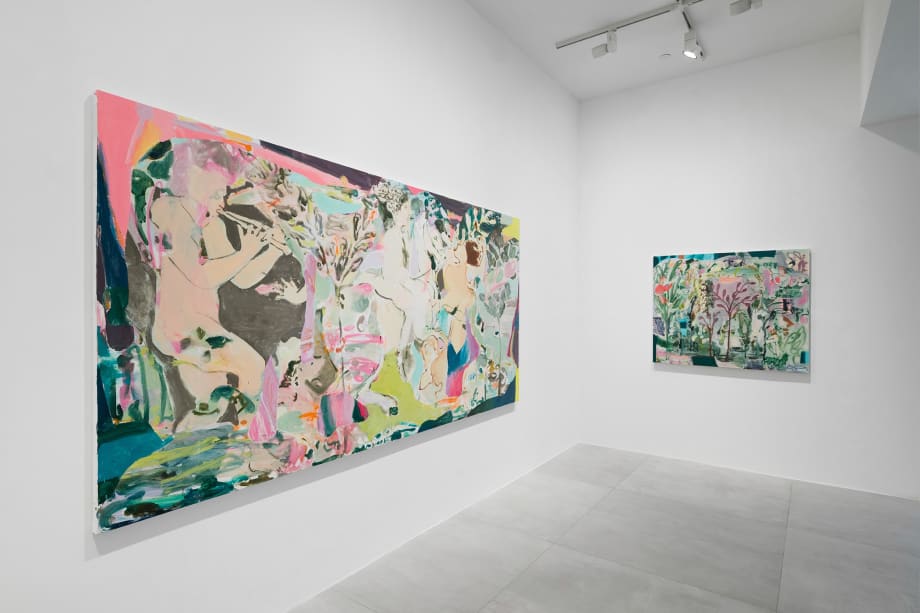Double Q Gallery is delighted to present ‘Come Apart’, the second solo exhibition by British artist Tomo Campbell at the gallery. In this new body of work, Campbell’s compositions seem to dance before the eye, loaded with splintered human figures, sweeping trees, and art historical motifs. They appear fluid. As forms melt into one another, watery bright yellow or chalky pink paint morphs to muted greys and deep blacks. Campbell revels in the process of painting. His canvases are formed through an instinctive way of working, in which characters from previous pieces and imagery found online or within reference books are drawn impulsively from his psyche. All this imbues the paintings with a hazy loss of reality.
Campbell’s new process of sealing off then later revealing parts of his paintings has allowed the artist a greater sense of freedom, with unexpected results. Areas of the canvas are taped up as he paints the next layer, meaning some aspects remain hidden while others are revealed once that section is peeled off. This creates a collage-like effect, with abrupt lines cutting through his compositions. It also gives viewers a glimpse of the underlayer or past iteration of each painting. There is no end point of the work for the artist; through this method, parts of the painting that were created early in the process become visible within the final piece. He draws parallels between this technique and Japanese woodcutting, in which the background and foreground are difficult to untangle.
Campbell maintains a similar sense of freedom with his content as his process, taking inspiration from sourced imagery and the world around him, but allowing it to feed into the work in as instinctive a manner as possible. Within ‘Come Apart’, one broad canvas of over three metres wide shows what could be a scene unravelling through thick trees. A nude figure playing the pipe, a woman’s face, and a running horse all seem to move across the canvas in the same direction. But the longer this scene is observed, the more it melts away. The woman’s face disappears into nothing. The man playing the pipe appears to have his feet submerged in water that stops bluntly. And the horse’s hooves are covered by an abstract patch of purple, blue and red. This is not a single, solid scene, but a collection of images, shapes, and brushstrokes.
Such motifs run through Campbell’s recent oeuvre, creating links and clues between the paintings for those wishing to find them, but evading a clear narrative. Throughout the exhibition, the human form is sometimes represented as living flesh, but often undergoes a double reimagining, with the artist painting stone carvings – already secondary interpretations in themselves. Campbell’s recognisable forms look as though they could slide into distortion or abstraction at any moment. In their conflicted state between abstract and figurative, foreground and background, fast-paced process and contemplative atmosphere, the artist leaves his paintings open to the viewer’s automatic response.
Freed from a strict academic or narrative reading, they are an invitation to look, and find what you will.
— Emily Steer

